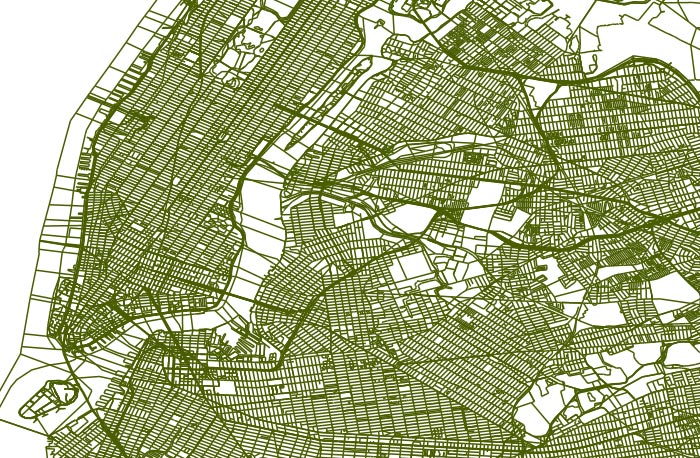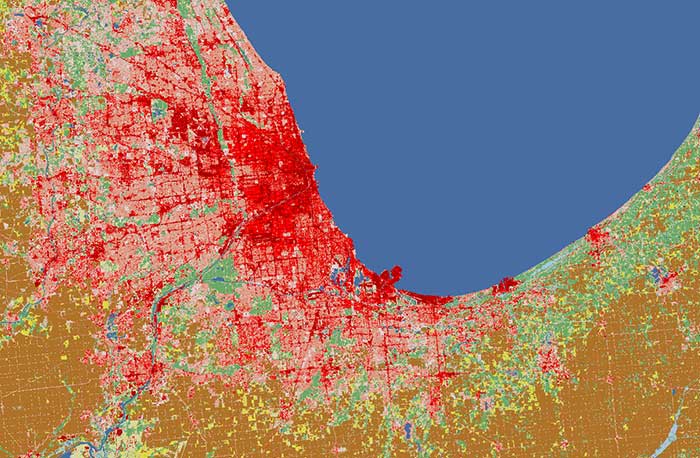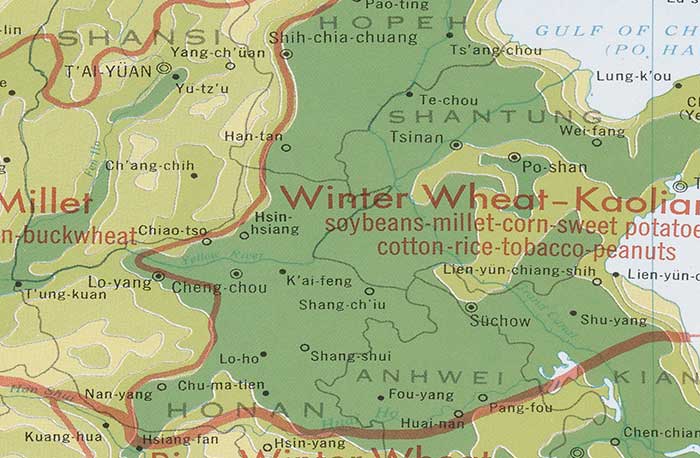View Metadata
Tribal Census Tracts United States 2010
- Identification Information
- Data Quality Information
- Spatial Data Organization Information
- Spatial Reference Information
- Entity and Attribute Information
- Distribution Information
- Metadata Reference Information
- Identification Information
- Citation
- Originator
- U.S. Census Bureau. Geography Division
- Publication Date
- 2010
- Title
- Tribal Census Tracts United States 2010
- Edition
- 2010
- Geospatial Data Presentation Form
- vector digital data
- Online Linkage
- https://hgl.harvard.edu/catalog/harvard-tg10ustribaltract
- Abstract
- This polygon data layer represents the 2010 TIGER/Line census tribal census tracts for the United States. The TIGER/Line Files are shapefiles and related database files (.dbf) that are an extract of selected geographic and cartographic information from the U.S. Census Bureau's Master Address File / Topologically Integrated Geographic Encoding and Referencing (MAF/TIGER) Database (MTDB). The MTDB represents a seamless national file with no overlaps or gaps between parts, however, each TIGER/Line File is designed to stand alone as an independent data set, or they can be combined to cover the entire nation. A tribal census tract is a relatively permanent statistical subdivision of a federally recognized American Indian reservation and/or off-reservation trust land, delineated by the American Indian tribal government and/or the Census Bureau for the purpose of presenting demographic data. For the 2010 Census, tribal census tracts groups are defined independently of the standard county-based block group delineation. For federally recognized American Indian Tribes with reservations and/or off-reservation trust lands with a population less than 2,400, a single tribal census tract is defined. Qualifying areas with a population greater than 2,400 could define additional tribal census tracts within their area. The tribal census tract codes for the 2010 Census are six characters long with a leading "T" alphabetic character followed by a five-digit numeric code, for example, T01000, which translates as tribal census tract 10. Tribal block groups nest within tribal census tract. Since individual tabulation blocks are defined within the standard State-county-census tract geographic hierarchy, a tribal census tract can contain seemingly duplicate block numbers, thus tribal census tracts cannot be used to uniquely identify census tabulation blocks for the 2010 Census. For the 2010 Census, tribal block groups and tribal census tracts were delineated through the Tribal Statistical Areas Program (TSAP).
- Purpose
- In order for others to use the information in the Census MAF/TIGER database in a geographic information system (GIS) or for other geographic applications, the Census Bureau releases to the public extracts of the database in the form of TIGER/Line Shapefiles.
- Temporal Extent
- Currentness Reference
- Publication Date
- Time Period
- Beginning
- 201001
- End
- 201007
- Bounding Box
- West
- -179.231086
- East
- 179.859681
- North
- 71.441059
- South
- 17.831509
- Theme Keyword
- Boundaries
- Indian reservations
- Census
- Administrative and political divisions
- Theme Keyword Thesaurus
- LCSH
- Theme Keyword
- boundaries
- Theme Keyword Thesaurus
- ISO 19115 Topic Categories
- Theme Keyword
- Nation
- Polygon
- Tribal Census Tract
- Theme Keyword Thesaurus
- None
- Place Keyword
- United States
- United States
- U.S.
- Place Keyword Thesaurus
- INCITS.38-200x (R2004),INCITS.31-200x (R2007),INCITS.454-200x,INCITS 455-200x,INCITS 446-2008
- Temporal Keyword
- Access Restrictions
- None
- Use Restrictions
- The TIGER/Line Shapefile products are not copyrighted however TIGER/Line and Census TIGER are registered trademarks of the U.S. Census Bureau. These products are free to use in a product or publication, however acknowledgement must be given to the U.S. Census Bureau as the source. The boundary information in the TIGER/Line Shapefiles are for statistical data collection and tabulation purposes only; their depiction and designation for statistical purposes does not constitute a determination of jurisdictional authority or rights of ownership or entitlement and they are not legal land descriptions.Coordinates in the TIGER/Line shapefiles have six implied decimal places, but the positional accuracy of these coordinates is not as great as the six decimal places suggest.
- Status
- Complete
- Maintenance and Update Frequency
- TIGER/Line Shapefiles are extracted from the Census MAF/TIGER database. No changes or updates will be made to this version of the TIGER/Line Shapefiles. Future releases of TIGER/Line Shapefiles will reflect updates made to the Census MAF/TIGER database.
- Point of Contact
- Contact Organization
- U.S. Department of Commerce, U.S. Census Bureau, Geography Division, Geographic Products Branch
- Delivery Point
- 4600 Silver Hill Road, Stop 7400
- City
- Washington
- State
- DC
- Postal Code
- 20233-7400
- Country
- United States
- Contact Telephone
- 301-763-1128
- Contact Facsimile Telephone
- 301-763-4710
- Contact Electronic Mail Address
- geo.tiger@census.gov
- Native Data Set Environment
- Microsoft Windows XP Version 5.1 (Build 2600) Service Pack 3; ESRI ArcCatalog 9.3.0.1770
- Data Quality Information
- Attribute Accuracy Report
- Accurate against Federal Information Processing Standards (FIPS), FIPS Publication 6-4, and FIPS-55 at the 100% level for the codes and base names. The remaining attribute information has been examined but has not been fully tested for accuracy.
- Logical Consistency Report
- The Census Bureau performed automated tests to ensure logical consistency and limits of shapefiles. Segments making up the outer and inner boundaries of a polygon tie end-to-end to completely enclose the area. All polygons are tested for closure. The Census Bureau uses its internally developed geographic update system to enhance and modify spatial and attribute data in the Census MAF/TIGER database. Standard geographic codes, such as FIPS codes for states, counties, municipalities, county subdivisions, places, American Indian/Alaska Native/Native Hawaiian areas, and congressional districts are used when encoding spatial entities. The Census Bureau performed spatial data tests for logical consistency of the codes during the compilation of the original Census MAF/TIGER database files. Most of the codes for geographic entities except states, counties, urban areas, Core Based Statistical Areas (CBSAs), American Indian Areas (AIAs), and congressional districts were provided to the Census Bureau by the USGS, the agency responsible for maintaining FIPS 55. Feature attribute information has been examined but has not been fully tested for consistency. For the TIGER/Line Shapefiles, the Point and Vector Object Count for the G-polygon SDTS Point and Vector Object Type reflects the number of records in the shapefile attribute table. For multi-polygon features, only one attribute record exists for each multi-polygon rather than one attribute record per individual G-polygon component of the multi-polygon feature. TIGER/Line Shapefile multi-polygons are an exception to the G-polygon object type classification. Therefore, when multi-polygons exist in a shapefile, the object count will be less than the actual number of G-polygons.
- Completeness Report
- Data completeness of the TIGER/Line Shapefiles reflects the contents of the Census MAF/TIGER database at the time the TIGER/Line Shapefiles were created.
- Lineage
- Source
- Originator
- U.S. Census Bureau. Geography Division
- Publication Date
- Unpublished material
- Title
- Census MAF/TIGER database
- Type of Source Media
- online
- Source Temporal Extent
- Time Period Information
- Range of Dates/Times
- Beginning Date
- 201001
- Ending Date
- 201007
- Source Currentness Reference
- Publication Date
- Contribution
- The selected geographic and cartographic information (line segments) are derived from the U.S. Census Bureau's Master Address File Topologically Integrated Geographic Encoding and Referencing (MAF/TIGER) database.
- Spatial Data Organization Information
- Indirect Spatial Reference Method
- Federal Information Processing Standards (FIPS), ANSI, and feature names.
- Direct Spatial Reference Method
- Vector
- Point and Vector Object Information
- SDTS Terms Description
- SDTS Point and Vector Object Type
- G-polygon
- Point and Vector Object Count
- 480
- Spatial Reference Information
- Horizontal Coordinate System Definition
- Geographic
- Latitude Resolution
- 0.000458
- Longitude Resolution
- 0.000458
- Geographic Coordinate Units
- Decimal degrees
- Geodetic Model
- Horizontal Datum Name
- North American Datum of 1983 in the 48 contiguous states, the District of Columbia, Alaska, Hawaii, Puerto Rico, the Virgin Islands of the United States, and the Pacific Island Areas.
- Ellipsoid Name
- Geodetic Reference System 80
- Semi-major Axis
- 6378137
- Denominator of Flattening Ratio
- 298257
- Entity and Attribute Information
- Entity Type
- Entity Type Label
- TG10USTRIBALTRACT.shp
- Entity Type Definition
- 2010 Census Tribal Census Tract National
- Entity Type Definition Source
- U.S. Census Bureau
- Attributes
- OBJECTID
- Internal feature number. (Sequential unique whole numbers that are automatically generated.)
- Definition Source
- ESRI
- AIANNHCE10
- 2010 Census American Indian/Alaska Native/ Native Hawaiian area
census code
- 0001 to 4999
- Legal federally recognized American Indian area code
- Definition Source
- U.S. Census Bureau
- TTRACTCE10
- 2010 Census tribal census tract code
- 000000 to 998999
- Blank
- T00000 to T98999
- Blank
- Definition Source
- U.S. Census Bureau
- GEOID10
- Tribal census tract identifier; a concatenation of 2010 Census
American Indian Area census code and tribal census tract code (2010 Census American Indian/Alaska Native/Native Hawaiian Area
census code found in AIANNHCE10 and the 2010 Census tribal census
tract code found in TTRACTCE10)
- Definition Source
- U.S. Census Bureau
- NAME10
- 2010 Census tribal census tract name, consisting of the first
four characters of the tribal census tract code
- Refer to the codes that appear in TTRACTCE10
- Blank
- Definition Source
- U.S. Census Bureau
- NAMELSAD10
- 2010 Census translated legal/statistical area description and
the tribal census tract name
- IT
- Tribal Census Tract
- Definition Source
- U.S. Census Bureau
- MTFCC10
- MAF/TIGER feature class code
- G2400
- Tribal Census Tract
- Definition Source
- U.S. Census Bureau
- ALAND10
- 2010 Census land area (square meters)
- 0 to 9,999,999,999,999
- Blank
- Definition Source
- U.S. Census Bureau
- AWATER10
- 2010 Census water area (square meters)
- 0 to 9,999,999,999,999
- Blank
- Definition Source
- U.S. Census Bureau
- INTPTLAT10
- 2010 Census latitude of the internal point
- 00
- Blank
- Definition Source
- U.S. Census Bureau
- INTPTLON10
- 2010 Census longitude of the internal point
- 00
- Blank
- Definition Source
- U.S. Census Bureau
- SHAPE
- Feature geometry. (Coordinates defining the features.)
- Definition Source
- ESRI
- SHAPE.AREA
- Feature area.
- Definition Source
- ESRI
- SHAPE.LEN
- Feature length.
- Definition Source
- ESRI
- Distribution Information
- Format Name
- Shapefile
- Distributor
- Harvard Geospatial Library
- Online Access
- http://hgl.harvard.edu/
- Name
- Metadata Reference Information
- Metadata Date
- 20120110
- Metadata Contact
- Contact Information
- Contact Organization Primary
- Contact Organization
- Harvard Geospatial Library
- Contact Position
- Geospatial Resources Cataloger
- Contact Address
- Address
- Harvard University Library
- Address
- Office For Information Systems
- Address
- 90 Mount Auburn Street
- City
- Cambridge
- State or Province
- MA
- Postal Code
- 02138
- Country
- USA
- Contact Voice Telephone
- 617-495-2417
- Contact Facsimile Telephone
- 617-496-0440
- Contact Electronic Mail Address
- hgl_ref@hulmail.harvard.edu
- Hours of Service
- Monday - Friday, 9:00 am - 4:00 pm EST-USA
- Metadata Standard Name
- FGDC Content Standards for Digital Geospatial Metadata
- Metadata Standard Version
- FGDC-STD-001-1998


